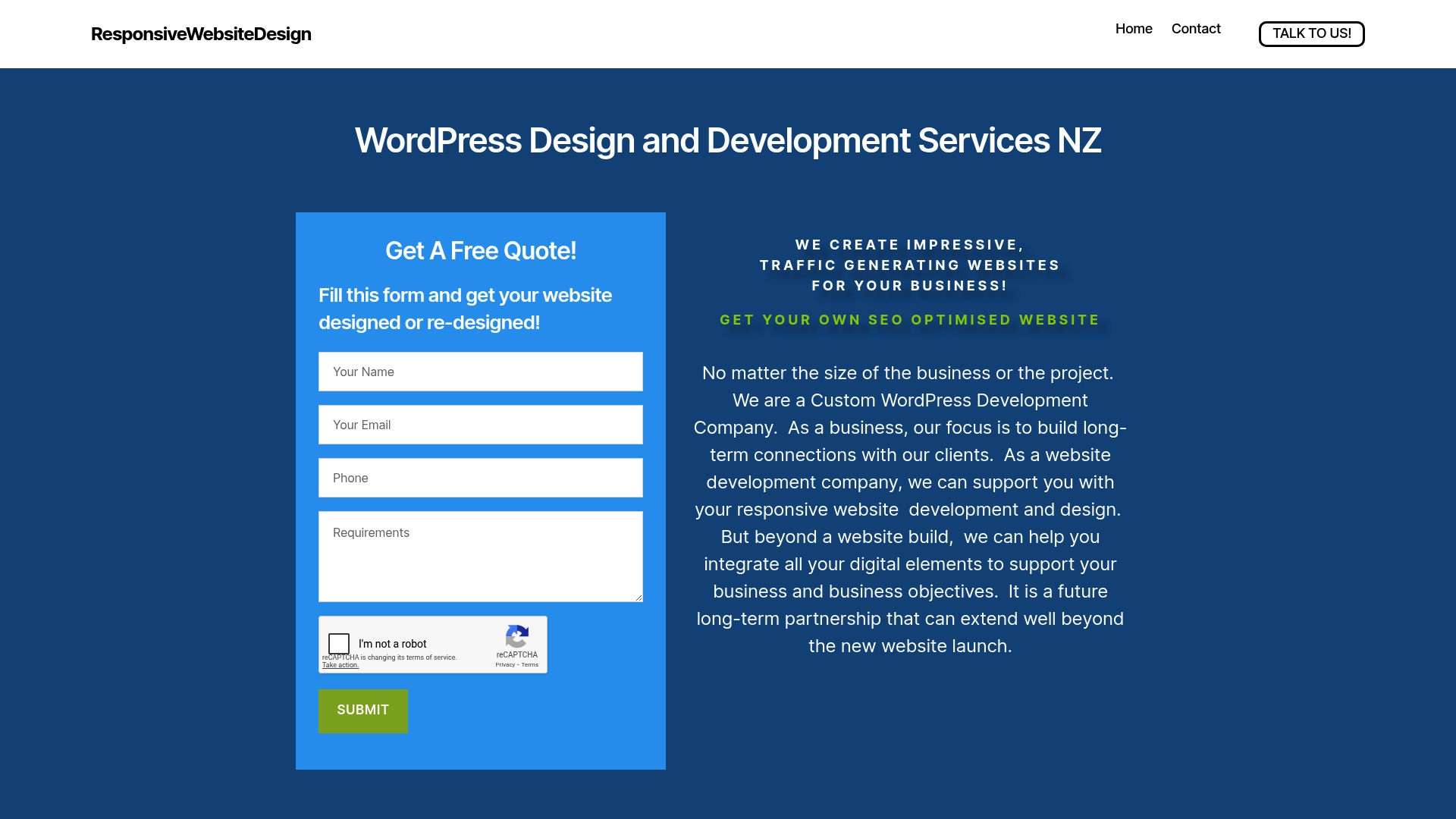Did you know that over 60 percent of small business websites face downtime each year due to missed maintenance tasks? A website that runs smoothly not only attracts visitors but also builds trust with your customers. When you take a proactive approach to website maintenance, you protect your digital presence from security threats, data loss, and avoid costly disruptions. This guide shows how you can confidently manage every step for a resilient, high-performing website.
Table of Contents
- Step 1: Assess Website Status And Gather Resources
- Step 2: Back Up All Site Data And Content
- Step 3: Update Core, Plugins, And Themes Securely
- Step 4: Test Website Functionality And Performance
- Step 5: Monitor Security And Resolve Issues
Quick Summary
| Key Point | Explanation |
|---|---|
| 1. Conduct a Comprehensive Website Audit | Assess your website’s structure and resources to identify areas that need attention for maintenance. |
| 2. Establish a Robust Backup Strategy | Regularly back up your website data in multiple locations to safeguard against data loss. |
| 3. Update Components Regularly | Keep your WordPress core, plugins, and themes updated to protect against vulnerabilities and ensure optimal performance. |
| 4. Test Functionality and Performance Monthly | Regularly evaluate loading speeds and interactive elements to maintain a seamless user experience. |
| 5. Implement Continuous Security Monitoring | Set up real-time threat detection and response protocols to proactively address security issues. |
Step 1: Assess Website Status and Gather Resources
Assessing your website’s current status forms the foundational step in creating a reliable maintenance workflow. This initial phase helps you understand precisely what requires attention and establishes a strategic roadmap for ongoing website management.
Begin by conducting a comprehensive audit of your existing website infrastructure. According to research from the website maintenance checklist, you will want to systematically review several critical areas. Start with a visual inspection of your website’s front end examining page layouts, functionality of interactive elements and overall user experience.
Next, dive into technical aspects of your website. Check all plugins and software for current versions ensuring they remain updated and compatible. The Web FX maintenance research highlights the critical nature of fixing broken links and verifying that all forms function properly. This means methodically clicking through every navigation menu testing each link and confirming that contact forms submit correctly.
Your resource gathering phase should include collecting critical website documents such as:
- Current hosting account details
- Domain registration information
- Website login credentials
- Original design files
- Content management system access
Additionally, compile a comprehensive list of every stakeholder involved with your website. This includes developers web designers content creators and anyone else who contributes to your online presence. Establish clear communication channels and assign specific maintenance responsibilities to each team member.
Pro Tip: Create a centralized digital folder containing all these essential documents to streamline future maintenance efforts.
By meticulously assessing your website’s current state and gathering necessary resources you set the stage for a proactive and efficient maintenance strategy.
 The next step involves creating a detailed action plan based on your initial assessment insights.
The next step involves creating a detailed action plan based on your initial assessment insights.
Step 2: Back Up All Site Data and Content
Creating a robust backup strategy is your safety net against potential website disasters. This critical step ensures you can quickly recover your digital assets if unexpected technical issues or data loss occur.
According to research from ClickUp templates, regular backups are essential to prevent data loss and maintain website integrity. Start by identifying all components that require backup including website files databases content management system configurations and any custom code or design assets.
Your backup process should encompass multiple layers of protection. Begin with your hosting platform backup options which typically provide automatic monthly snapshots. Next implement additional backup methods using specialized WordPress plugins or cloud storage services. Recommended backup locations include external hard drives secure cloud platforms like Google Drive or dedicated backup services specializing in website data preservation.
Key items to include in your comprehensive backup strategy:
- Complete WordPress database
- Theme and plugin files
- WordPress configuration files
- Media uploads and image libraries
- Custom code modifications
- Email configuration settings
Research from Web FX maintenance guidelines suggests performing backups monthly as part of routine website maintenance. However for websites with frequent content updates consider weekly or even daily backup schedules to minimize potential data loss.
Pro Tip: Always maintain at least three separate backup copies stored in different physical or cloud locations to ensure maximum data protection.
Test your backup restoration process periodically to confirm that your saved data can be successfully reinstalled if needed.
This practice verifies the integrity of your backup strategy and provides peace of mind knowing your website can be quickly recovered.
With a solid backup system in place you are now prepared to move forward confidently in your website maintenance workflow knowing your digital assets are secure and recoverable.
Step 3: Update Core, Plugins, and Themes Securely
Updating your website components is a critical security and performance maintenance task that protects your digital infrastructure from potential vulnerabilities. This essential process ensures your WordPress site remains robust secure and functioning optimally.
According to research from the UCSF School of Pharmacy maintenance guidelines, maintaining website components involves regularly updating core systems plugins and themes. Before beginning your update process create a complete backup of your website to prevent potential data loss during modifications.
Start by checking your WordPress core version. Navigate to the dashboard and look for update notifications. WordPress typically provides automatic update suggestions for minor security releases. For major version updates proceed with caution and verify plugin compatibility before implementing.
Plugin and theme updates require careful consideration. Follow these strategic steps:
- Review current installed plugins and themes
- Check compatibility with your WordPress version
- Read update changelogs for potential issues
- Update one component at a time
- Test website functionality after each update
Research from Web FX maintenance guidelines recommends implementing weekly update routines. This consistent approach helps mitigate security risks and ensures your website remains current with the latest features and performance improvements.
Pro Tip: Always update on a staging or development site first to verify complete compatibility before applying changes to your live website.
Prioritize updates for security focused plugins such as firewall protection login security and malware scanning tools. These components play a crucial role in maintaining your website protection against potential digital threats.
By systematically updating your website components you create a proactive defense mechanism that keeps your digital presence secure responsive and professionally maintained. Your next step involves conducting a comprehensive performance and security review to validate these updates.
Step 4: Test Website Functionality and Performance
Testing your website’s functionality and performance is a critical step in maintaining a professional and reliable online presence. This comprehensive evaluation ensures your website delivers an exceptional user experience across multiple devices and platforms.
According to research from the website speed optimization builders guide, performance testing involves multiple strategic assessments. Begin by examining your website’s loading speed across different browsers and devices. Use tools like Google PageSpeed Insights to generate detailed performance reports and identify potential optimization opportunities.
Your functionality testing should encompass a comprehensive review of key website elements. Systematically check navigation menus contact forms interactive buttons payment gateways and all dynamic content components. Verify that each element responds correctly and provides smooth user interaction without unexpected errors or delays.
Key areas to thoroughly evaluate include:
- Page load times
- Mobile responsiveness
- Form submission processes
- Navigation menu functionality
- Payment gateway integration
- Interactive element responsiveness
- Cross browser compatibility
Research from Web FX maintenance guidelines recommends conducting monthly performance reviews. This consistent approach helps identify and address potential issues before they impact user experience or website performance.
Pro Tip: Test your website from multiple geographic locations and using different internet connection speeds to ensure comprehensive performance assessment.
Pay special attention to user experience factors such as intuitive navigation site speed and seamless interaction across various devices. A well performing website not only attracts visitors but also encourages them to engage more deeply with your content and services.
By meticulously testing your website’s functionality and performance you create a robust digital platform that delivers consistent value to your audience. Your next step involves analyzing the collected performance data and implementing targeted improvements to enhance your website’s overall effectiveness.
Step 5: Monitor Security and Resolve Issues
Website security monitoring represents a critical defensive strategy that protects your digital assets from potential cyber threats and unauthorized access. This proactive approach ensures your website remains a secure and trustworthy platform for your users and business operations.
According to research from the user experience tips for business websites, maintaining a secure online environment involves comprehensive monitoring and swift issue resolution. Begin by implementing robust security plugins that provide real time scanning and threat detection capabilities.
Your security monitoring strategy should include multiple layers of protection. Configure automatic security scans that check for malware suspicious code injections potential vulnerabilities and unexpected file modifications. Establish a systematic approach to reviewing security logs and tracking any unusual activities or potential breach attempts.
Key security monitoring activities include:
- Scanning for malware and potential security breaches
- Monitoring user login attempts
- Checking file integrity
- Reviewing server logs
- Identifying potential plugin vulnerabilities
- Tracking unexpected website changes
- Monitoring user access permissions
Research from the UCSF School of Pharmacy maintenance guidelines emphasizes the importance of assigning specific personnel responsible for website security monitoring. This approach ensures dedicated attention to potential security risks and enables rapid response to emerging threats.
Pro Tip: Set up automated email alerts for any detected security incidents to enable immediate investigation and mitigation.
Regularly update your security protocols and conduct comprehensive security audits. This includes reviewing user access levels removing outdated accounts and ensuring that all website components maintain current security standards.
By implementing a robust security monitoring workflow you create a resilient digital infrastructure that protects your online presence from potential cyber risks. Your next step involves developing a comprehensive incident response plan to address any security challenges swiftly and effectively.
Here’s a summary of key activities in each website maintenance step:
| Step | Main Activities | Recommended Frequency |
|---|---|---|
| Assess Website Status | Site audit Resource gathering Stakeholder list | Initial setup Annual review |
| Back Up Site Data | Full site backup Store in 3 locations Test restoration | Monthly Weekly/Daily for busy sites |
| Update Core, Plugins, Themes | Review changelogs Verify compatibility Update & test | Weekly |
| Test Functionality & Performance | Speed testing Mobile checks Form and link testing | Monthly |
| Monitor Security | Malware scans Review logs Alert setup | Continuous Weekly review |
Secure Your Website’s Future with Expert Maintenance Solutions
Maintaining a reliable website means overcoming key challenges like keeping all plugins, themes, and the core system up to date. You want to protect your site against security threats while ensuring performance stays fast and flawless. This article breaks down a smart website maintenance workflow that includes crucial steps like comprehensive backups, regular updates, and ongoing security monitoring. These tasks can feel overwhelming when balancing business priorities.

Partner with a trusted agency specialising in WordPress website design and maintenance that understands your unique needs. At ResponsiveWebsiteDesign, we focus on creating responsive, SEO-optimised websites backed by thorough management services which include proactive site audits, secure updates, and continuous performance reviews. Discover how our dedicated team supports you beyond design through robust maintenance that protects your investment and keeps your site running smoothly. Ready to take control of your website’s health and boost your online presence today Explore our insights in the Website Archives or start your journey now by visiting ResponsiveWebsiteDesign.
Frequently Asked Questions
What is the first step in a website maintenance workflow?
Assessing your website’s current status is the first step. Conduct a comprehensive audit of your site’s infrastructure, including visual inspections and technical checks, to identify areas needing attention.
How often should I back up my website data?
You should back up your website data at least once every month. If your site frequently updates its content, consider performing backups weekly or even daily to minimize potential data loss.
How do I ensure my website components are updated securely?
To update your website components securely, begin by creating a full backup of your site. Then, review and update core systems, plugins, and themes individually while testing functionality after each update to ensure compatibility.
What should I include in my website functionality and performance tests?
Your testing should include checks on page load times, mobile responsiveness, form submission processes, and all interactive elements. Perform these tests at least once a month to maintain optimal user experience.
How can I monitor my website’s security effectively?
Implement a security monitoring strategy that includes automatic malware scans and log reviews. Additionally, set up alerts for any detected issues to address potential threats promptly, aiming for continuous monitoring for maximum protection.
Why is it important to gather resources before starting website maintenance?
Gathering resources ensures you have all essential documents and access information in one place, streamlining your maintenance efforts. For example, compile hosting details and login credentials to enable a more efficient workflow.
Recommended
- Website Maintenance Checklist for Business Success – ResponsiveWebsiteDesign
- Responsive Design Tools Comparison – Best Picks 2025 – ResponsiveWebsiteDesign
- Preventive Maintenance Checklist for Diesel Injection Pros – My WordPress
- 7 nõuannet, kuidas efektiivselt hallata ja hooldada WordPressi veebilehte aastal 2024. WordPressi hoolduse soovitused. | W3B.ee – Veebilehed, e-poed, turundus
